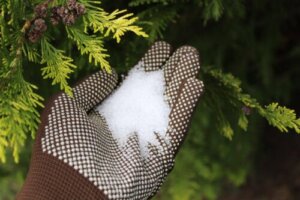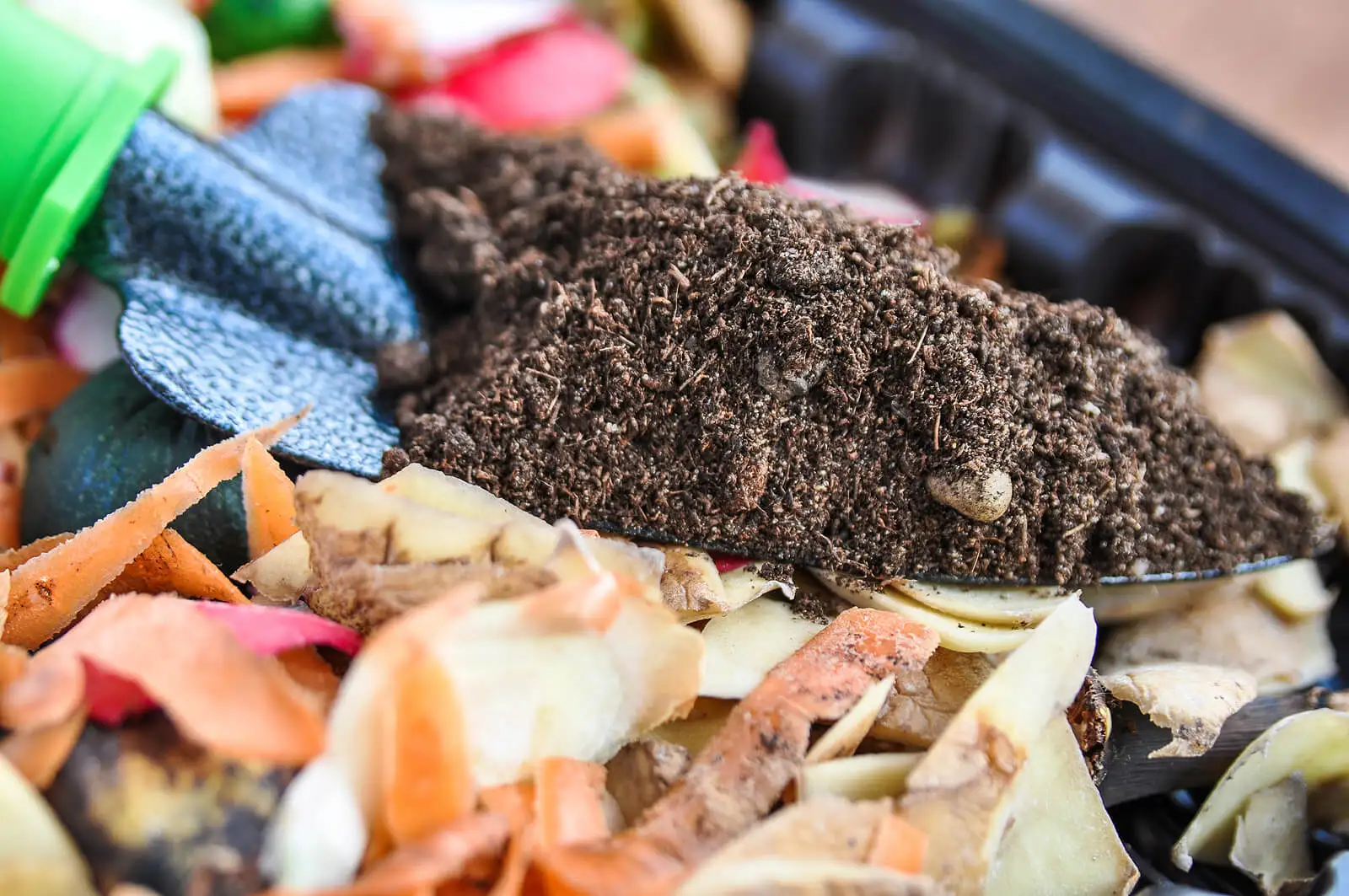10 Ways to Use Epsom Salts in Your Garden

Although this substance is associated with medicinal use, we can also use it to improve the appearance of plants, crops, and lawns. There are different ways to use Epsom salts in the garden to enhance the development and healthy growth of the flora of your outdoor spaces.
We know that in humans, these salts have analgesic and laxative properties, thanks to their high magnesium sulfate content. What isn’t so well known is that these salts have other applications in plants, which have proven to be very effective.
1. Epsom salts increase the absorption of nutrients
The absorption of minerals such as nitrogen, phosphorus, and sulfur is enhanced when you add the magnesium sulfate contained in the salts. We suggest adding one tablespoon of Epsom salts for every 4 liters of irrigation water, twice a month. After a while, you’ll notice how the foliage becomes thicker.
2. They soften the impact of transplanting
When you transplant a plant, the plant suffers a lot; its leaves turn yellow and in some cases tend to wither. When moving the plant, put salts in water and soak the roots directly in this preparation.
Transplants in the garden cause stress on vegetables, so there are techniques to minimize the impact.3. They strengthen the seeds
The large amount of magnesium in Epsom salts strengthens cell walls, so seeds gain more energy and strength during germination. After sowing, add a tablespoon of salts for every 4 liters of water used for irrigation.
Also, before placing the seeds, try pouring a tablespoon of salts into the hole provided for planting.
You may be interested in: How to Use Avocado Seeds to Treat Cellulite
4. Eliminate pests
Pests in the garden are an evil that seems to have no solution, because no matter how much we eradicate some species, new ones will soon appear. The advantage of eliminating pests with these salts is that in addition to cleaning, we’ll be adding nutrients.
Mix one cup of Epsom salts in a 20-liter bucket of water and use the preparation to spray the foliage.
5. They improve crops
If you have some crops in your garden or fruit trees, you can also take advantage of the benefits of Epsom salts. Apply a solution of water and salts to the roots of fruit trees.
Remember to be constant and repeat this process about 3 times a year. The same can be done for bell pepper and tomato plants. Reinforce this technique by spraying the leaves of crops once a month.
6. They can improve your lawn
If you want a lush, dense, and healthy lawn, then sprinkle Epsom salts on the soil before watering. It works out to about one kilogram (2.2 lbs) of salts per 100m2 of lawn (1000 sq. feet)
You may be interested in: Types of Garden Soil and Their Characteristics
7. Revive your houseplants
Houseplants grown in pots can also benefit from Epsom salts. In this case, prepare a solution of 2 tablespoons of salts in 4 liters of water and spray the leaves.
You will get faster results than if you pour the salts on the roots. In any case, you can also sprinkle the salts at the foot of the plant before watering, once a month.
8. Improve the green of the leaves
If you notice that your plants look discolored and their leaves are a bit yellowish, perhaps it’s a good idea to add salts to them. The magnesium present in them favors the production of chlorophyll. Just spray the leaves with a solution based on a tablespoon of Epsom salts in 4 liters of water.
9. Enhance the effect of liquid fertilizers
In some cases, it’s common to have to resort to the application of liquid fertilizers to improve plant health. If you want an even more intense effect, try adding 1 tablespoon of Epsom salts to every 2 liters of fertilizer. You’ll notice the difference in a short time.

10. They fertilize the soil naturally
If you’re thinking of growing new species of plants or adding some crops to your garden, you could use the salts to fertilize the soil you’ll use. The ratio is calculated at 1 tablespoon of salts per square meter (10 square feet) of soil.
A soil rich in magnesium makes it easier for plants to absorb nutrients such as nitrogen and phosphorus. The same goes for compost, which you can add these salts to in order to improve the quality of the soil.
Use Epsom salts in your garden to see a radical change in your plants
We hope you’ll be able to apply some of these ideas to your plants and crops, because it’s worth giving these Epsom salts a chance to improve the appearance and health of our little plant kingdom.
It isn’t necessary to be experts in gardening, as the way to apply them is very simple; we only need to be consistent. As you notice the positive changes in your crops, you’ll be motivated to continue using Epsom salts in your garden.
All cited sources were thoroughly reviewed by our team to ensure their quality, reliability, currency, and validity. The bibliography of this article was considered reliable and of academic or scientific accuracy.
- González, R. P. (2019). Z= 12, magnesio, Mg. Elemento esencial para la vida. Anales de Química de la RSEQ, 115(2), 74-74.
- Abad, C., Piñero, S., Proverbio, T., Proverbio, F., & Marín, R. (2005). Sulfato de magnesio:¿ Una panacea?. Interciencia, 30(9), 543-549.
- ROBERTO, Z. L. V. (2020). ESTUDIO COMPARATIVO DEL SULFATO DE MAGNESIO EN SUELO ARCILLOSO EN EL CULTIVO DE BANANO (Musa paradisiaca)(Doctoral dissertation, UNIVERSIDAD AGRARIA DEL ECUADOR).
- Hernández, R., & Jordá, M. G. (1981). Plantas medicinales. Editorial Pax México.
- Aliasgharpour, M. (2019). From Epsom Salt to a Beneficial Mineral; Magnesium. International Journal of Medical Investigation, 8(4), 1-8.
This text is provided for informational purposes only and does not replace consultation with a professional. If in doubt, consult your specialist.








